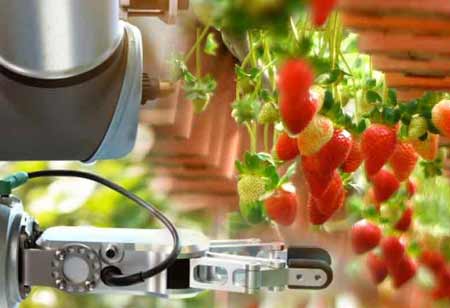Thank you for Subscribing to Agri Business Review Weekly Brief
The Role of AI in Aqua Farming in Altering the Future of Fish Growth
Aquaculture has become so popular that the business has made the list of the fastest-growing industries globally.

By
Agri Business Review | Thursday, June 02, 2022
Stay ahead of the industry with exclusive feature stories on the top companies, expert insights and the latest news delivered straight to your inbox. Subscribe today.
Because of the expanding popularity of aquafarming, it has been included on the list of the fastest-growing sectors in the world.
FREMONT, CA: Aquaculture has become so popular that the business has made the list of the fastest-growing industries globally. Despite having existed for millennia, the sector is relatively young and expanding rapidly. Aquaculture faces numerous obstacles, including disease management, low productivity, feed, nutrition, etc. AI comes to the rescue—there has always been an ongoing endeavor to boost fish growth by feasible methods. The development of technology has enabled the fast expansion of fish farming. Consider how technology has positively affected the fish farming sector.
Parasites and illnesses are among the most significant risks associated with fish farming. Typically, the crowded conditions of the fish farms are to blame. In the end, the effect on yield, maintenance, and manufacturing costs is evident. So, robotic cages come to the rescue—the robots have the potential to assess the fish's condition, paving the path for an effective method of fish farming and operation management.
What could be better than a device that monitors fish farms without human intervention? This is precisely what remotely operated vehicles (ROVs) have to offer. Farmers can swiftly inspect their nets without leaving their offices with these vehicles. Additionally, it is possible to equip cars with cameras that make lateral inspections much simpler and problem-free. Although this equipment is costly, it is unquestionably well worth every penny.
As demand for seafood continues to climb, AI has assisted the industry in improving yields with less effort. Farmers can now analyze how their inputs affect the growth of fish in different environments, which has led to a dramatic improvement in aquaculture. With the implementation of AI, fisheries can now comprehend diverse feeding tactics. Curious about how the AI systems would operate? Well, these AI systems would do analysis using cloud infrastructures. Not only that, but it is also possible to identify irregularities utilizing data-driven insights.
Overfishing is one of the critical challenges surrounding fish farming. Through data collecting systems, AI can drastically decrease overfishing. These data-gathering tools rely on AI to ensure harvesting activities are accountable. The employment of technology in sensors, drones, and robots is advantageous for the fishing business. They are utilized extensively for data collection, then fed to complex algorithms for enhanced decision making.
To fulfill the increasing market demand and client expectations, fishing organizations today favor simpler technology such as cameras and feeding systems. To achieve a competitive advantage, the businesses integrate AI-based system learning further into their technologies.
In addition to other obstacles, aquaculture must also contend with water contamination. Once again, AI comes to the rescue—AI can aid in detecting and alerting farmers about underwater contamination. The farmers are then able to dispatch robots to repair the situation.
Currently, the technology requires minimal human intervention. In the foreseeable future, however, most decisions will be made automatically by AI. Over time, the demand for sustainability has increased.





